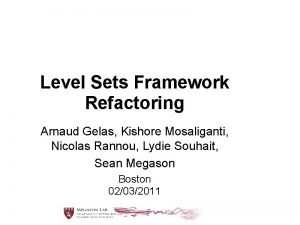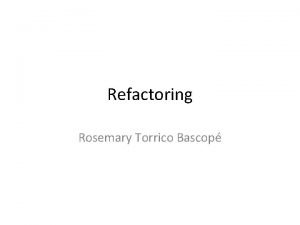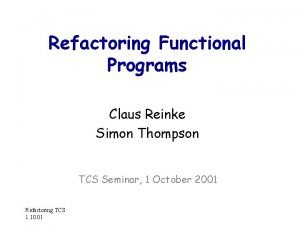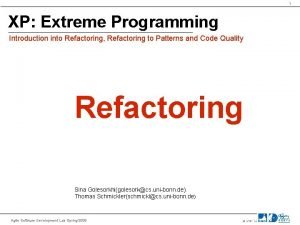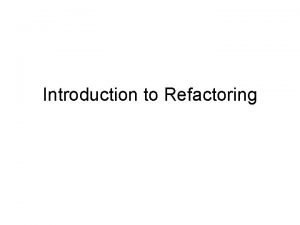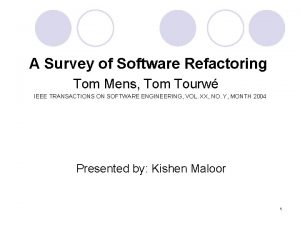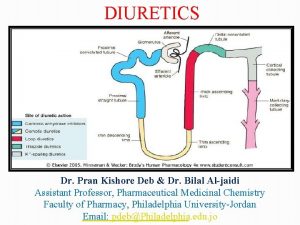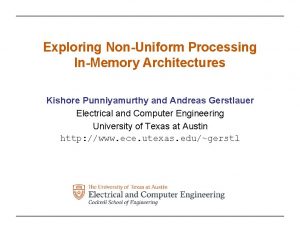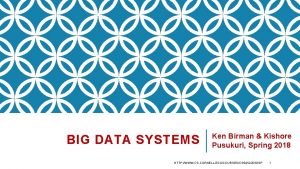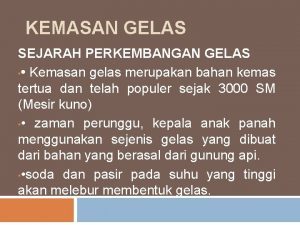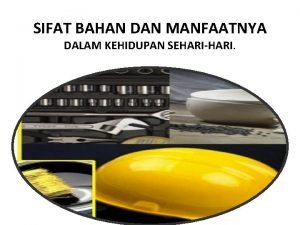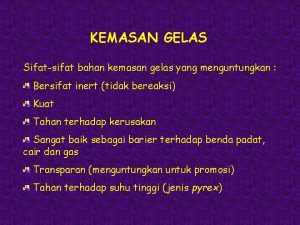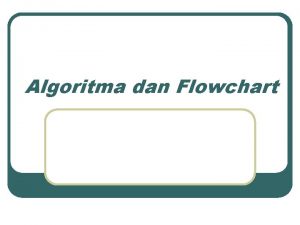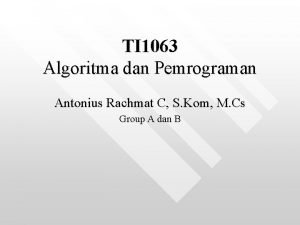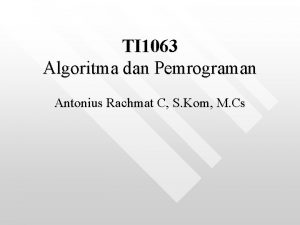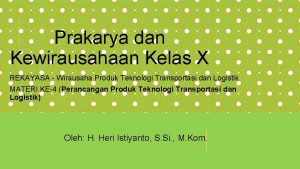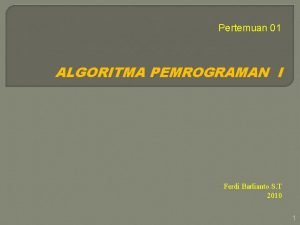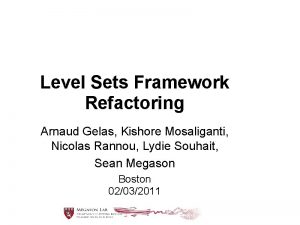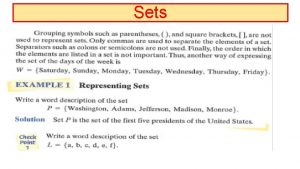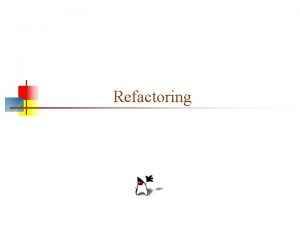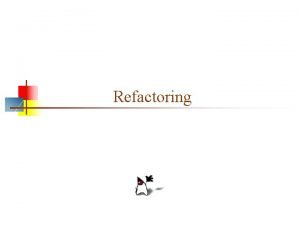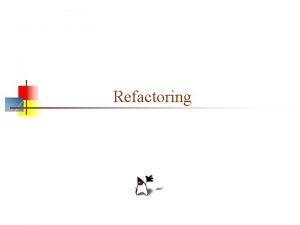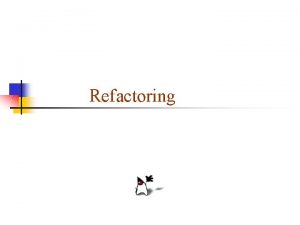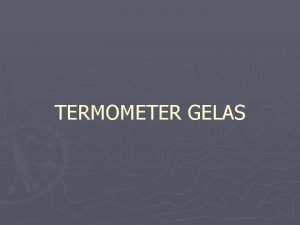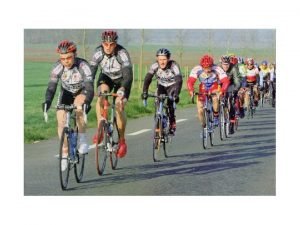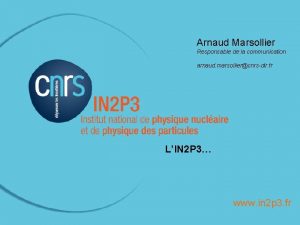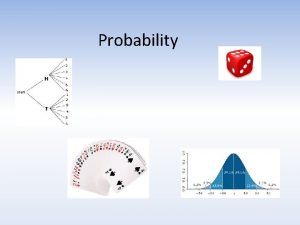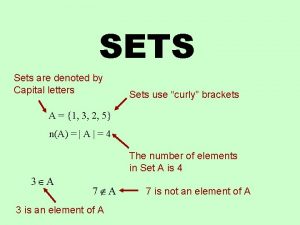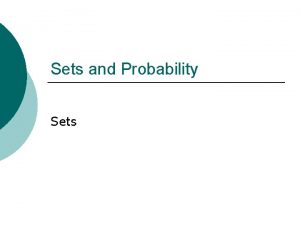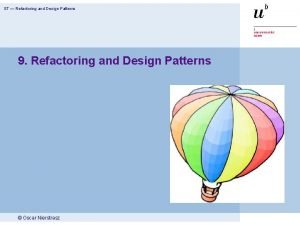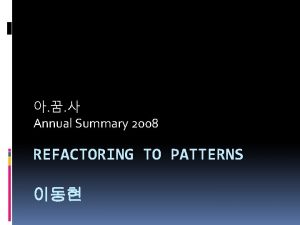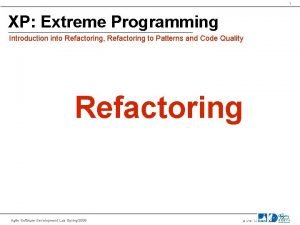Level Sets Framework Refactoring Arnaud Gelas Kishore Mosaliganti











![Constrained Topology [Tustisson'10 - Insight Journal 778] Escher's Ants as Metaphor: Topological Marching for Constrained Topology [Tustisson'10 - Insight Journal 778] Escher's Ants as Metaphor: Topological Marching for](https://slidetodoc.com/presentation_image/35ec44dfd621b9032e3debe0d06e3309/image-12.jpg)
![Minimal Path Extraction [Mueller'08 - Insight Journal 213] Fast Marching Minimal Path Extraction in Minimal Path Extraction [Mueller'08 - Insight Journal 213] Fast Marching Minimal Path Extraction in](https://slidetodoc.com/presentation_image/35ec44dfd621b9032e3debe0d06e3309/image-13.jpg)












- Slides: 25

Level Sets Framework Refactoring Arnaud Gelas, Kishore Mosaliganti, Nicolas Rannou, Lydie Souhait, Sean Megason Boston 02/03/2011

Outline • Goals • Principles • Status o Traits o Fast Marching § Image / Mesh § Stopping Criterion § Constrained Topology § Shortest Path Computation § Isotropic / Anisotropic o Level Sets / GPU • Plan • Requirements

Goal: Generic Level Set Framework • Multi-level set support • simultaneous evolution of level sets • Multi-channel support • Vector or tensor data segmentation • Level set representation • Mesh-based (unstructured), image, or parametric • Terms used in the PDE • Add/delete terms in the update equation • Topological constraints • Stopping criterion • RMS, Iterations, target points

Discrete Level Set STATUS

Traits • TInput. Domain • TNode • TOutput. Domain • TSuperclass

Traits - Base Class template< class TInput. Domain, class TNode, class TOutput. Domain, class TSuperclass > class Level. Set. Traits { public: typedef [. . . ] class Node. Pair : public std: : pair< Node. Type, Output. Pixel. Type > [. . . ] };

Traits - Image Specialization template<unsigned int VDimension, class TInput. Pixel, typename TOutput. Pixel > class Image. Level. Set. Traits : public Level. Set. Traits< Image< TInput. Pixel, VDimension >, Index< VDimension >, Image< TOutput. Pixel, VDimension >, Image. To. Image. Filter< Image< TInput. Pixel, VDimension >, Image< TOutput. Pixel, VDimension > > >

Traits - Mesh Specialization template< unsigned int VDimension, typename TInput. Pixel, class TInput. Mesh. Traits, typename TOutput. Pixel, class TOutput. Mesh. Traits > class Mesh. Level. Set. Traits : public Level. Set. Traits< Mesh< TInput. Pixel, VDimension, TInput. Mesh. Traits >, typename TInput. Mesh. Traits: : Point. Identifier, Mesh< TOutput. Pixel, VDimension, TOutput. Mesh. Traits >, Mesh. To. Mesh. Filter< Mesh< TInput. Pixel, VDimension, TInput. Mesh. Traits >, Mesh< TOutput. Pixel, VDimension, TOutput. Mesh. Traits > >

Fast Marching • Code available at the following address: https: //github. com/arnaudgelas/itk. Fast. Marching • Numbers: o 36 tests o Tested § Fedora 13, 14 (64 bits) § Ubuntu 10. 10 (64 bits) § Mac OS-X 10. 5, 10. 6 o Coverage: 80. 49%

Stopping Criterion - Base Class class Stopping. Criterion. Base : public Object { public: virtual bool Is. Statisfied() const = 0; virtual const std: : string Get. Description() const = 0; };

Stopping Criterion - Examples • Threshold on the current value o Equivalent to the current implementation of itk: : Fast. Marching. Image. Filter<> • Reached Target Nodes (One, Some, All), with possible overshoot offset o Equivalent to the current implementation of itk: : Fast. Marching. Up. Wind. Gradient. Image. Filter<>
![Constrained Topology Tustisson10 Insight Journal 778 Eschers Ants as Metaphor Topological Marching for Constrained Topology [Tustisson'10 - Insight Journal 778] Escher's Ants as Metaphor: Topological Marching for](https://slidetodoc.com/presentation_image/35ec44dfd621b9032e3debe0d06e3309/image-12.jpg)
Constrained Topology [Tustisson'10 - Insight Journal 778] Escher's Ants as Metaphor: Topological Marching for the Well-Composed, Genus Zero Crowd
![Minimal Path Extraction Mueller08 Insight Journal 213 Fast Marching Minimal Path Extraction in Minimal Path Extraction [Mueller'08 - Insight Journal 213] Fast Marching Minimal Path Extraction in](https://slidetodoc.com/presentation_image/35ec44dfd621b9032e3debe0d06e3309/image-13.jpg)
Minimal Path Extraction [Mueller'08 - Insight Journal 213] Fast Marching Minimal Path Extraction in ITK

Isotropic / Anisotropic Isotropic • Can be solved using current implementation Anisotropic • Several possible schemes • which one the best? • make it easy to implement any of these methods

Requirements Possible performance improvement Update. Neighbors() calls 2 * Image. Dimension Update. Value() Thread Pool ?

Fast Marching - Process ? • Integration Process? o Should we struggle for its integration (backward compatibility) ? o Should we struggle a second time when integrating new level sets framework?

Fast Marching - Process ? • update software guide? o When ? o How ? o Any constraint?

FUTURE WORK

Plan • Git repository • Discrete Representations o o o Domain Traits Iterators Dense § Term container § Propagation § Advection § Curvature § Chan & Vese energy § Multithread § Reinitialization § Stopping Criterion

Plan • Discrete Representations • Sparse – Constrained Topology – Multithread • Real time algorithm [Shi] • Parametric Representations • Splines • RBF

Discrete Level Sets - simplified view (a) while( ! m_Stopping. Criterion->Is. Satisfied() ) (b) { (c) for each level set ls_i in the level set container (d) { (e) for each nodes n_j in the domain of ls_i (f) { (g) for each term t_k in the term container (h) { (i) Compute Term Value t_k( n_j, ls_i ) (j) Compute Term Contribution for time step computation (k) } (l) Evaluate the updated level set function ( delta( ls_i( n_j) ) ) (m) } (n) } (o) Compute time step from CFL Condition (p) for each level set ls_i in the level set container (q) { (r) Update the level set function ls_i (s) Reinitialize to signed distance function (if requested by user) (t) } (u) }

GPU Involvement - 1 (a) while( !m_Stopping. Criterion->Is. Satisfied() ) (b) { (c) for each level set ls_i in the level set container (d) { (e) for each nodes in the domain of ls_i (f) { (g) for each term t_k in the term container (h) { (i) Compute Term Value t_k( n_j, ls_i ) GPU implementation during pixel updates at (i): • Pixel neighborhood in image and level set is copied to GPU memory • Terms are evaluated in the GPU function • Each term will have a CPU and GPU implementation • A term factory will call the GPU implementation (i) Advantages: • Minimal changes in the current proposed design • Drawbacks: • very bad according to performance

GPU Involvement -2 (a) while ( !m_Stopping. Criterion->Is. Satisfied() ) (b) { (c) for each level set ls_i in the level set container (d) { (e) for each nodes in the domain of ls_i (f) { (g) for each term t_k in the term container (h) { • Compute Term Value t_k( n_j, ls_i ) • Entire while loop iteration (a) in GPU • Everything is copied inside the GPU memory • Advantages: • Fastest solution in terms of performance • Downside: • memory limitation of the GPU (<2 Gb) • Code duplication: CPU and GPU • Note: Copy b/w memory 4 Gb/s

GPU Involvement -3 In the last scenario, the code nesting is different: (a) while( !m_Stopping. Criterion->Is. Satisfied() ) (b) { (c) for each level set ls_i in the level set container (d) { (e) for each term in the term container (f) { (g) for each nodes in the domain of ls_i (h) { (i) Evaluate the updated level set function [. . . ] In this one the GPU Implementation will occur for the most nested for loop (g) • Keep copying the level set and image in each iteration in the GPU • Second most optimal implementation for GPU • No code duplication

Questions and Comments ?
 Kishore mosaliganti
Kishore mosaliganti Arnaud gelas
Arnaud gelas Refactoring to patterns joshua kerievsky
Refactoring to patterns joshua kerievsky Refactoring vs shimming
Refactoring vs shimming Bascop
Bascop Software refactoring beratung
Software refactoring beratung Refactoring: improving the design of existing code
Refactoring: improving the design of existing code Code refactoring
Code refactoring Extreme programming refactoring
Extreme programming refactoring Refactoring and restructuring methods
Refactoring and restructuring methods A survey of software refactoring
A survey of software refactoring Pran kishore
Pran kishore Jugal kishore card repertory
Jugal kishore card repertory Lic jeevan kishore
Lic jeevan kishore Kishore punniyamurthy
Kishore punniyamurthy Kishore pusukuri
Kishore pusukuri Sejarah gelas
Sejarah gelas Berkilau sangat bagus dan lembut tidak mudah kusut
Berkilau sangat bagus dan lembut tidak mudah kusut Bahan kemasan logam
Bahan kemasan logam Flowchart menukar isi dua gelas
Flowchart menukar isi dua gelas Flowchart menukar isi dua gelas
Flowchart menukar isi dua gelas Flowchart tukar isi gelas
Flowchart tukar isi gelas Ada 2 gelas kosong berukuran 5 liter dan 3 liter
Ada 2 gelas kosong berukuran 5 liter dan 3 liter Ada 2 gelas kosong berukuran 5 liter dan 3 liter
Ada 2 gelas kosong berukuran 5 liter dan 3 liter Contoh penentuan desain akhir
Contoh penentuan desain akhir Ada 2 gelas kosong berukuran 5 liter dan 3 liter
Ada 2 gelas kosong berukuran 5 liter dan 3 liter
